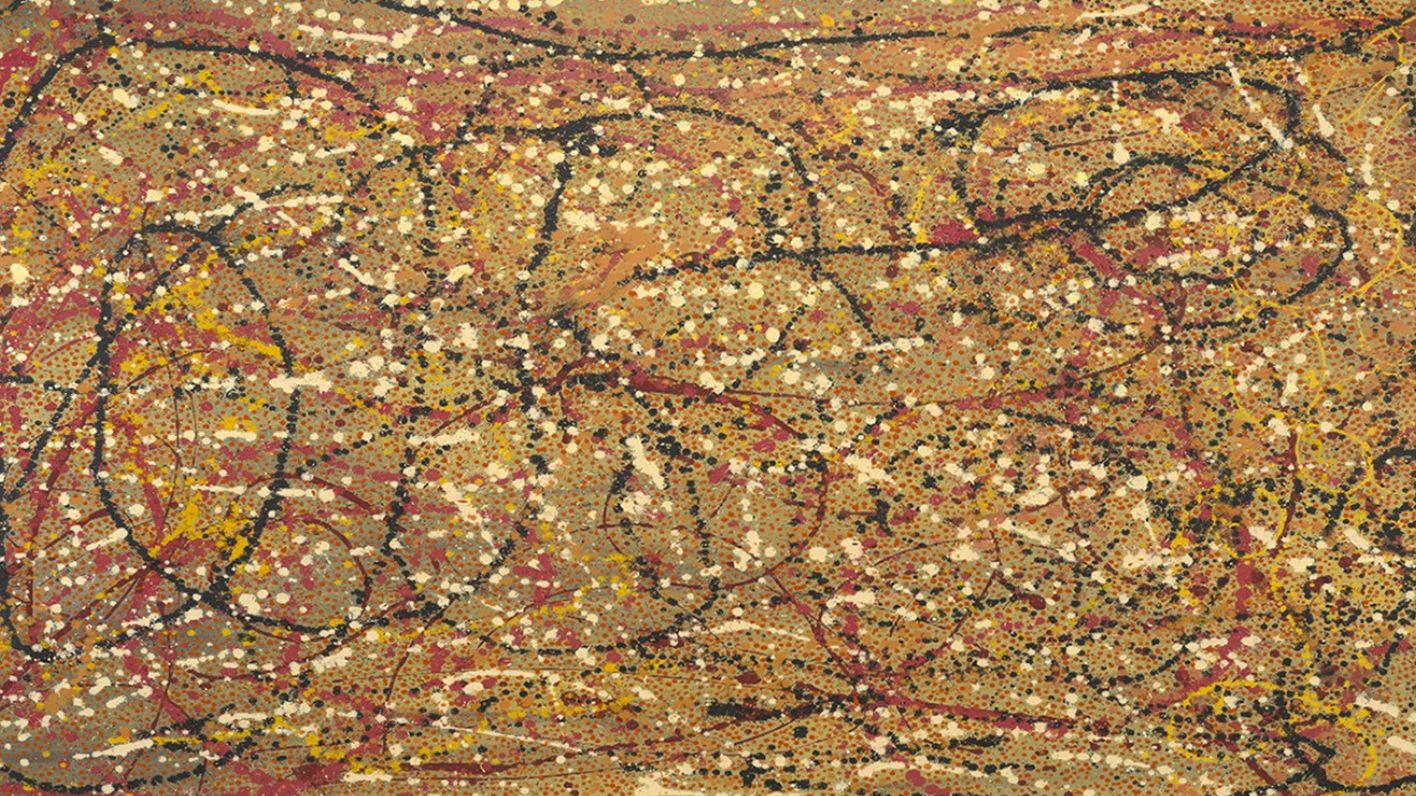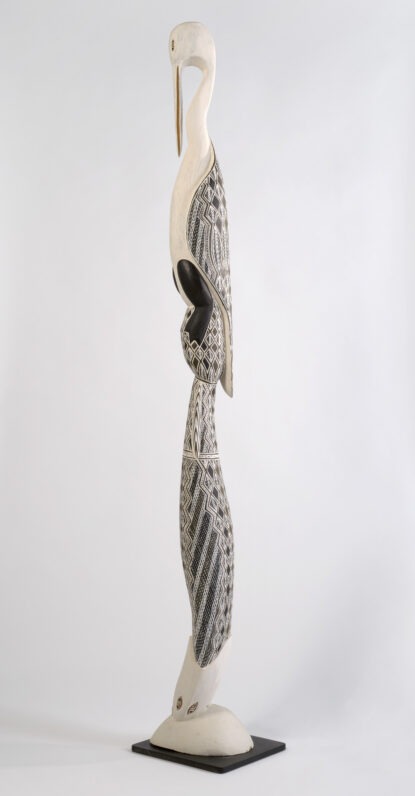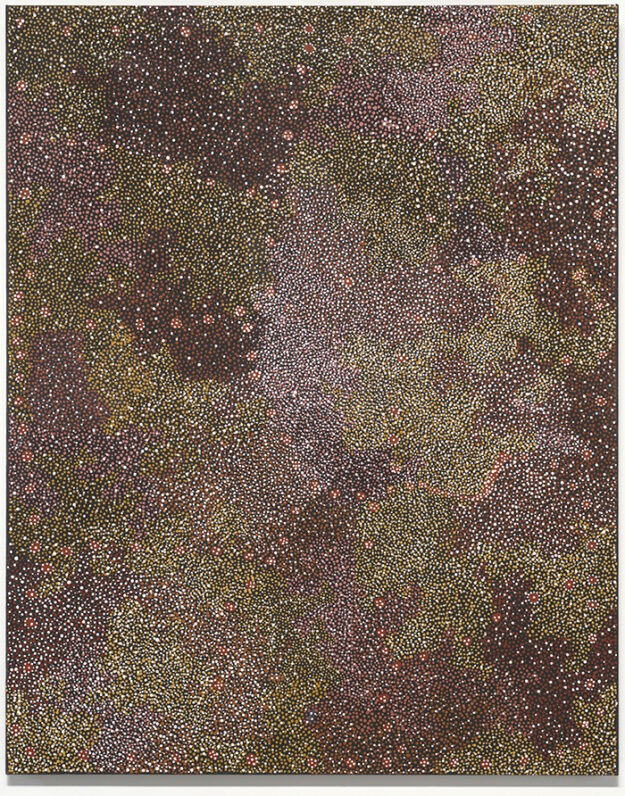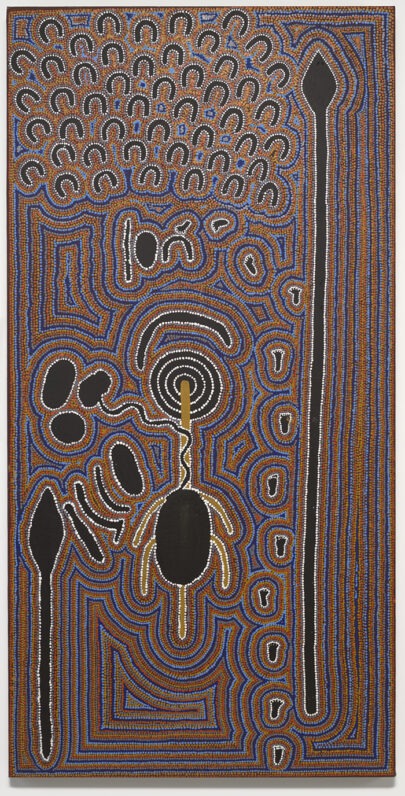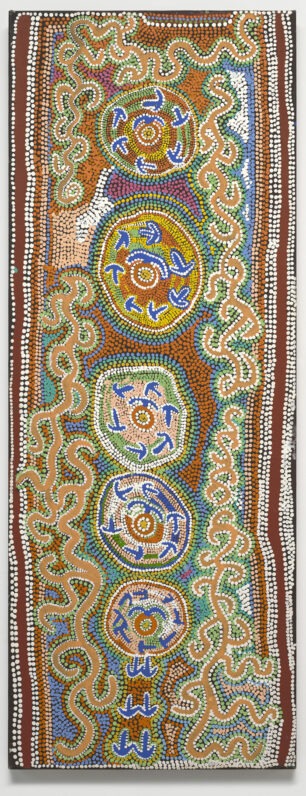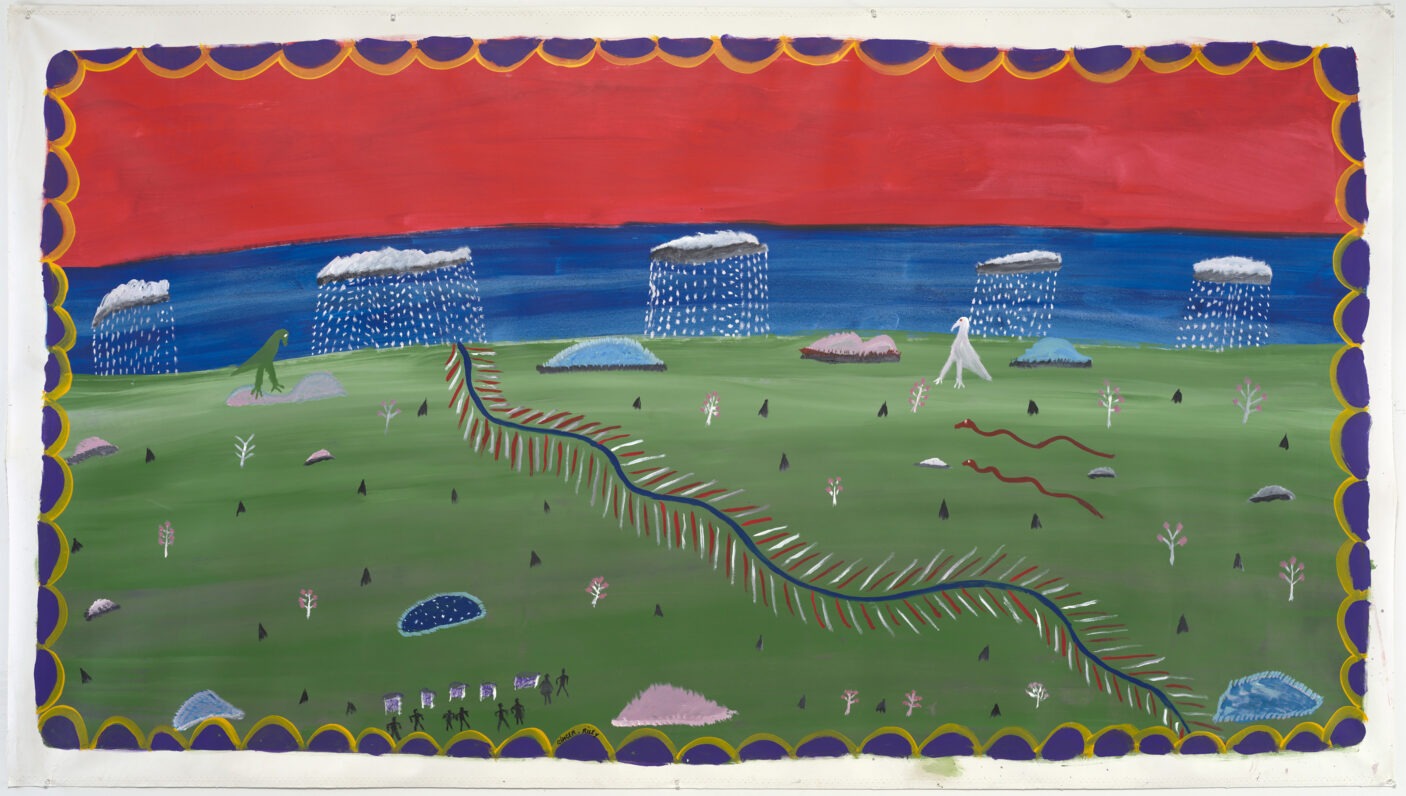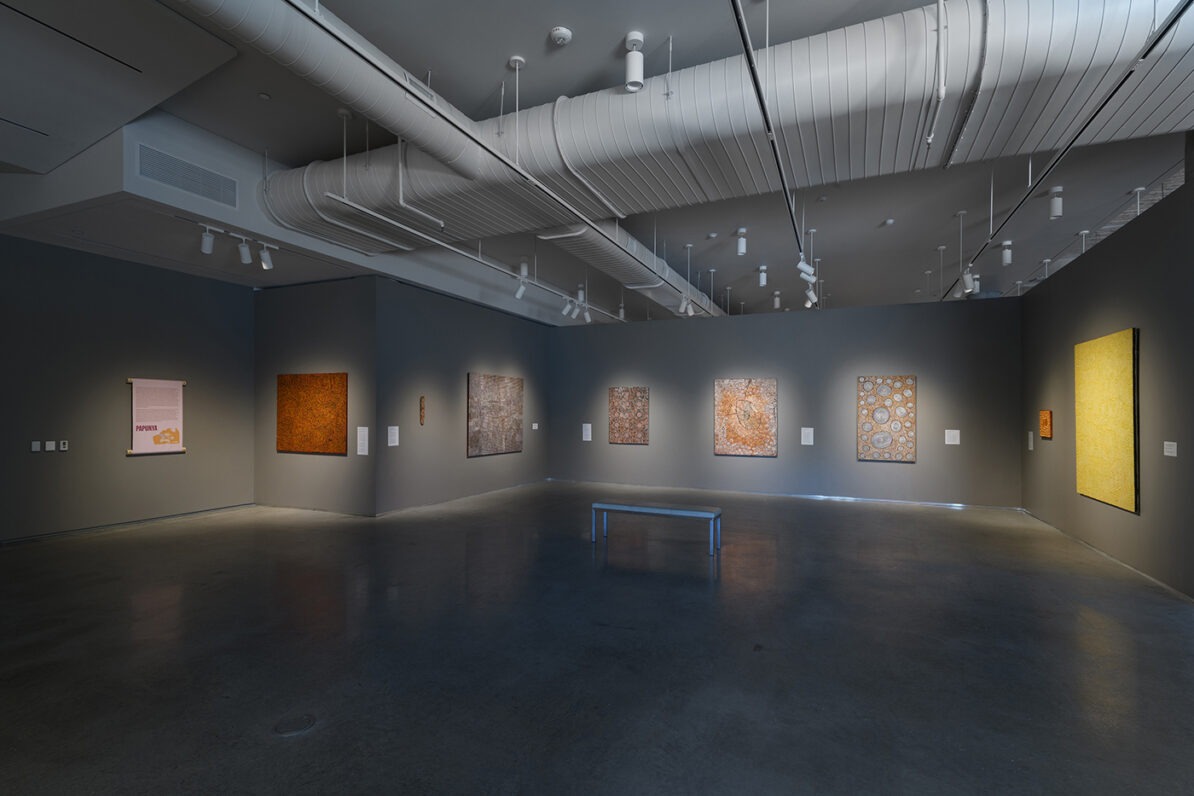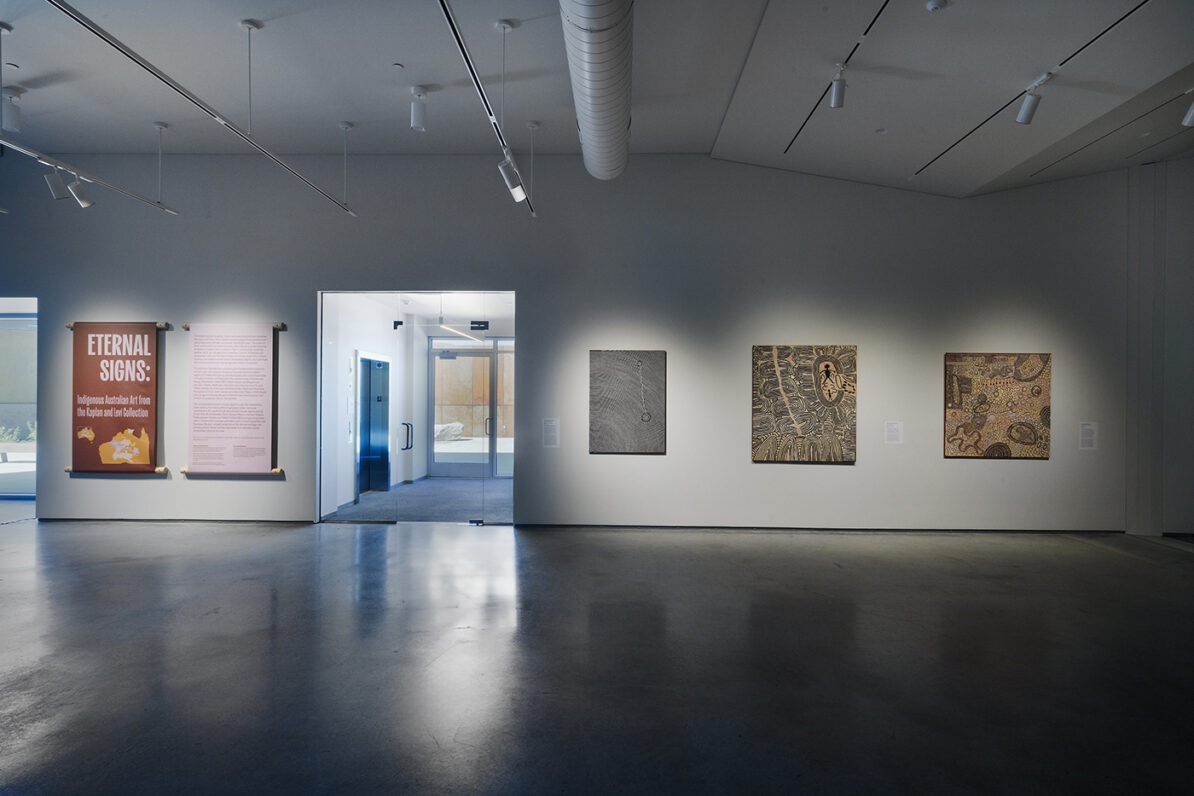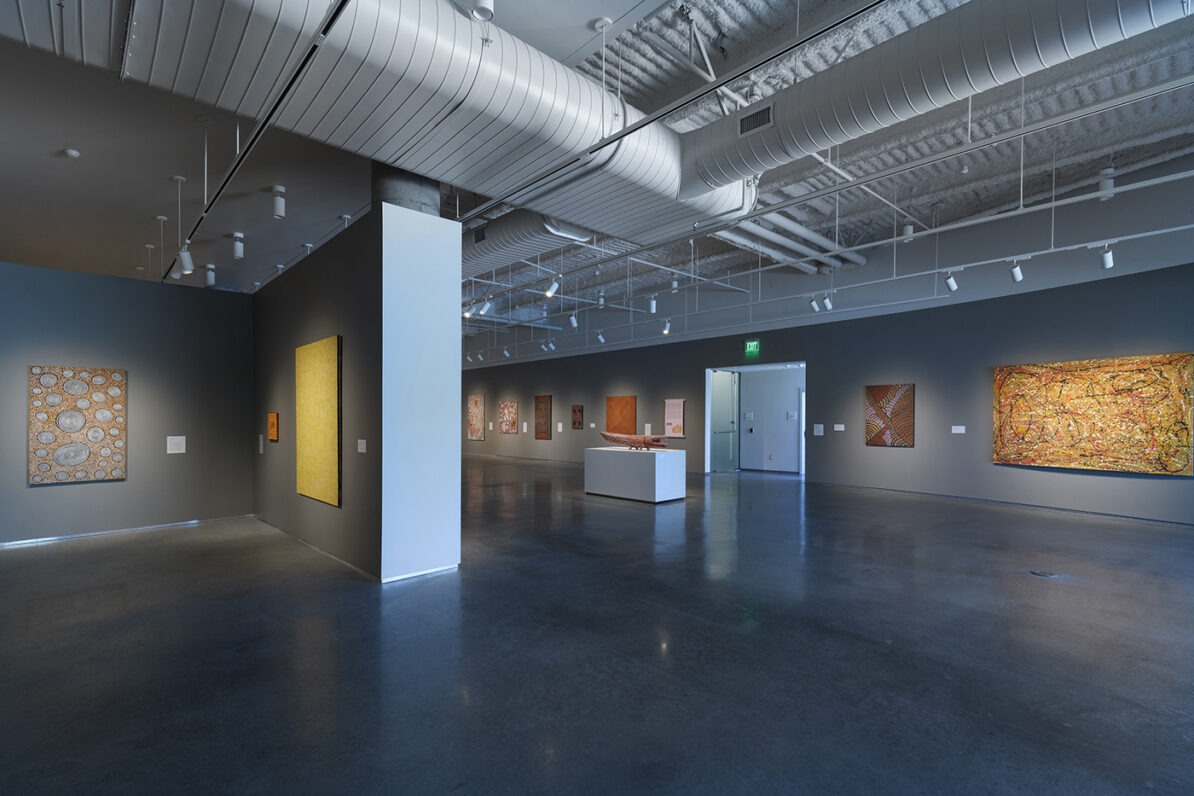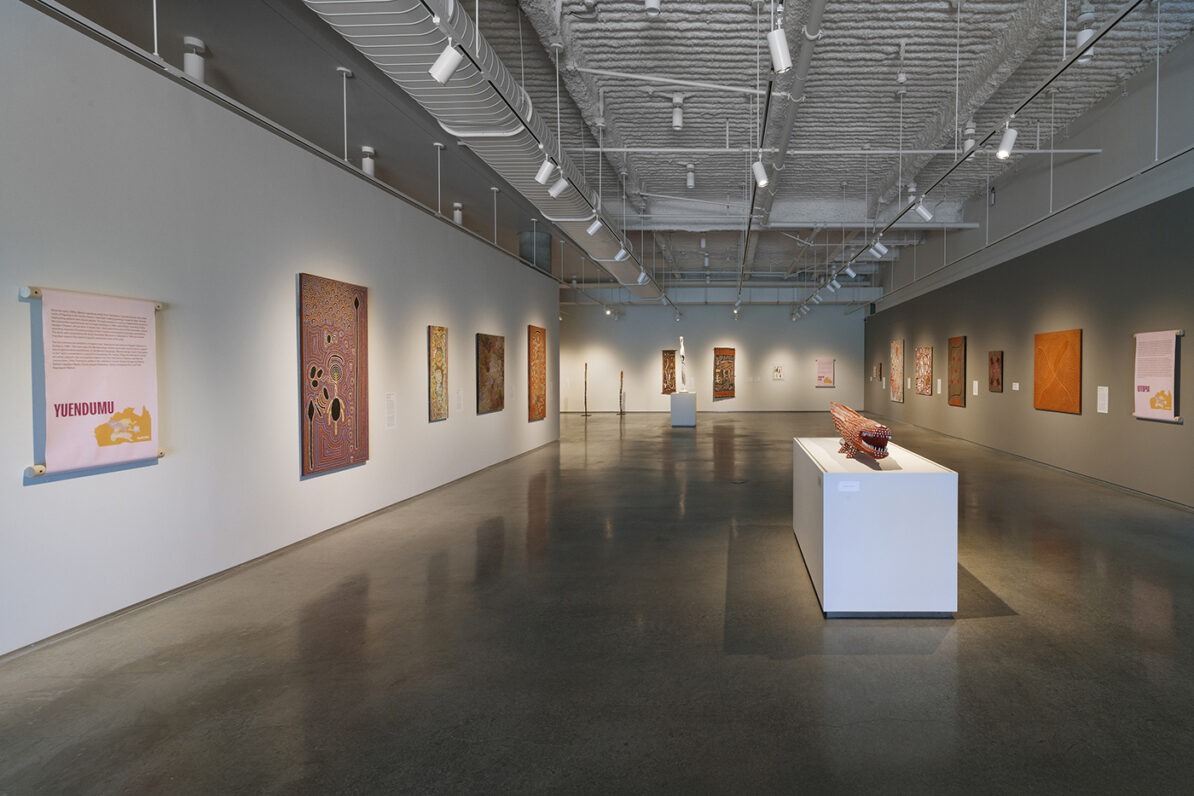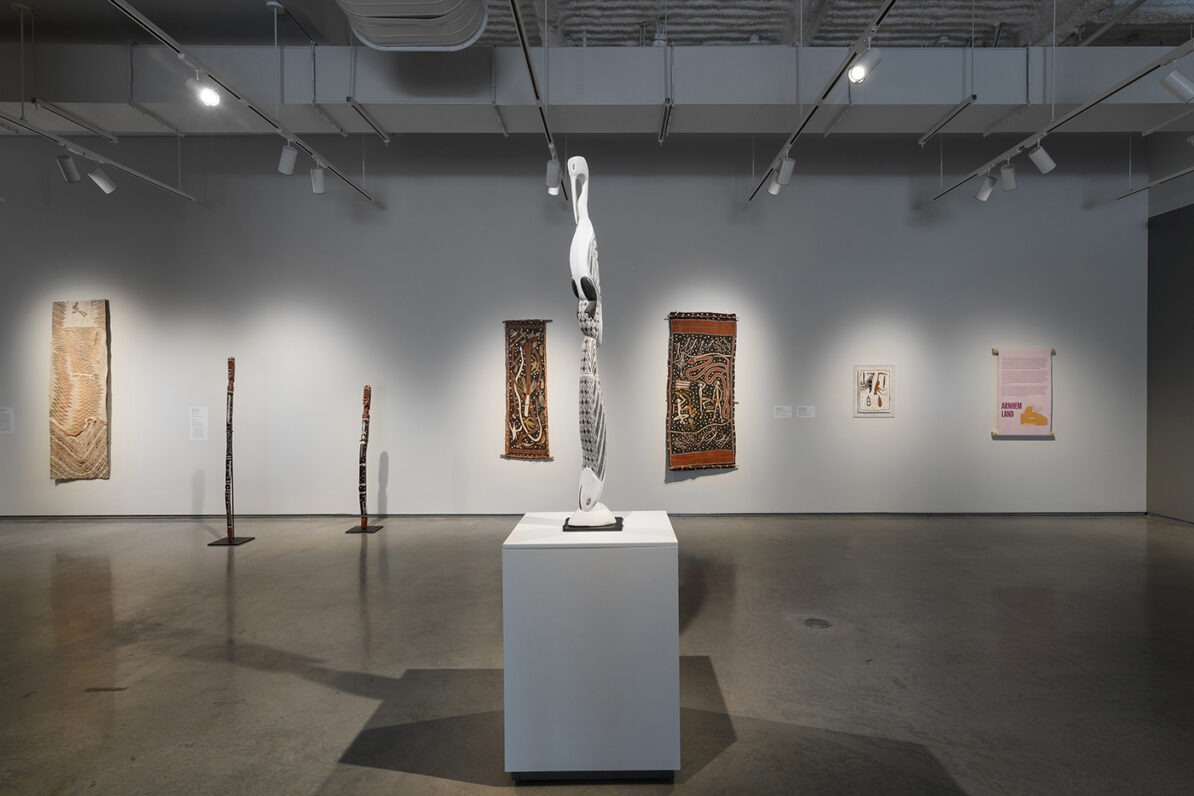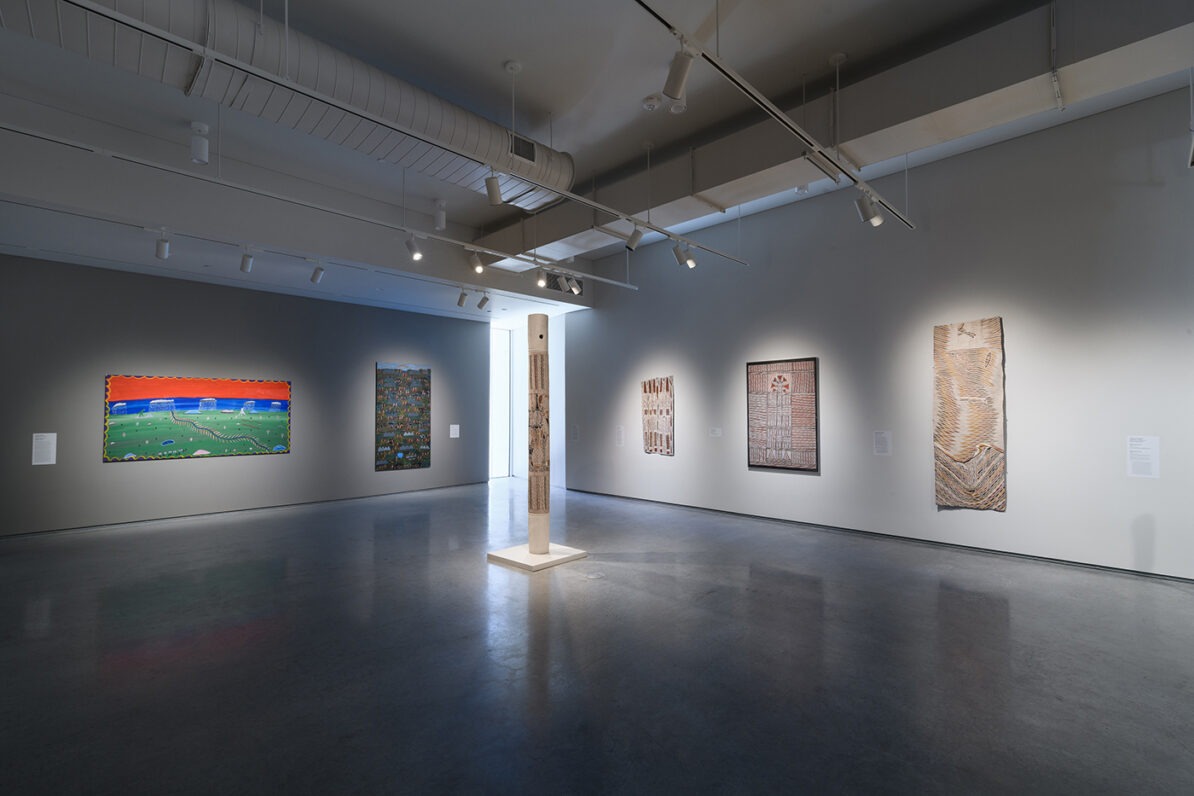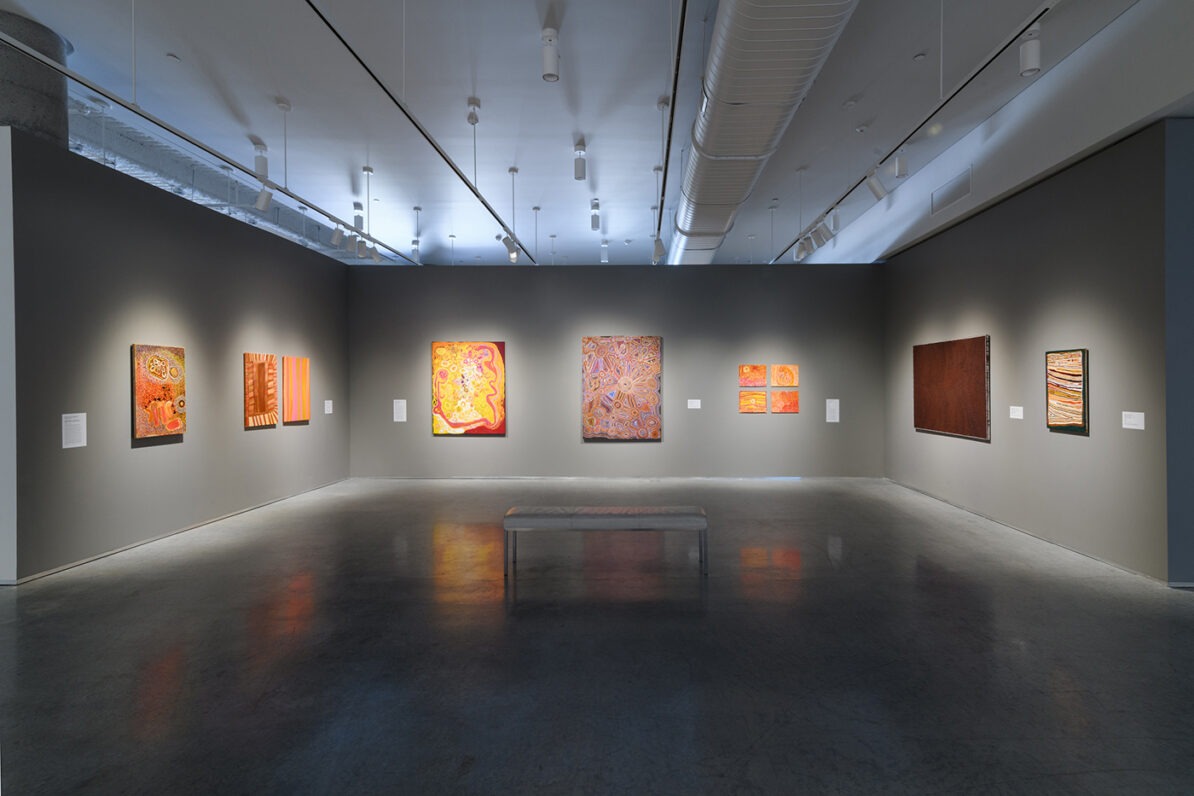Considered among the world’s oldest, continuous living cultures, Australian Aboriginal people come from ancestral lines estimated to be greater than 60,000 years old. The origins of the cultures and belief systems, often referred to as Dreamings, Songlines, or Creation Time, continue to inform knowledge systems that exist today, which are intricately tied to their Country (homeland) and are represented in their art. Thus their contemporary works of art evidence what has been referred to as an “eternal present.” For artists from remote areas of the continent, their lives continue to be linked to ancient knowledge and diverse customs, which permeate their art forms and become eternal sign systems that evolve in the present.
This exhibition highlights the momentous gift of contemporary Indigenous artists from many rural areas throughout the continent of Australia—from the northern region of Arnhem Land (Yirrkala and Maningrida) to the Central desert sites of Utopia and Papunya, and to southern areas of Anangu Pitjanjatjar Lands (APY). Robert Kaplan and Margaret Levi, who live in Seattle, Washington, have been acquiring work since the early 1990s, building one of the most esteemed collections of Australian Aboriginal and Torres Strait Islander artists in the United States. In 2023, Kaplan and Levi gave the Nevada Museum of Art more than seventy works, most of which are presented here for the first time.
This consequential gift includes over fifty contemporary artists working from twenty different geographic areas. Artists represented in this significant gift and exhibition include legends such as Ginger Riley Munduwalawala, Polly Napangardi, Gloria Petyarre, George Ward Tjungurrayi, and Paddy Fordham Wainburranga, among many others. Artists of a younger generation who have already been recognized on an international stage, such as Gunybi Ganambarr and Djambawa Marawlli, are similarly present. Thirty-six artists from about fifteen diverse communities and language groups comprise the exhibition.
Celebrated for its diverse holdings of Australian Aboriginal Art from a range of media, the Kaplan & Levi Collection now forms a significant core of the Museum’s Robert S. and Dorothy J. Keyser Art of the Greater West Collection. In 2012, the Museum defined the Greater West as a “super region,” which broadens conventional definitions of the West by expanding the scope of the collection’s geographic emphasis to encompass a region generally bounded from Alaska to Patagonia and from Australia to the United States intermountain West. This is a geography of frontiers characterized by large expanses of open land, enormous natural resources, diverse Indigenous peoples, colonization, and the conflicts that inevitably arise when all four of those factors exist in the same place at the same time.
